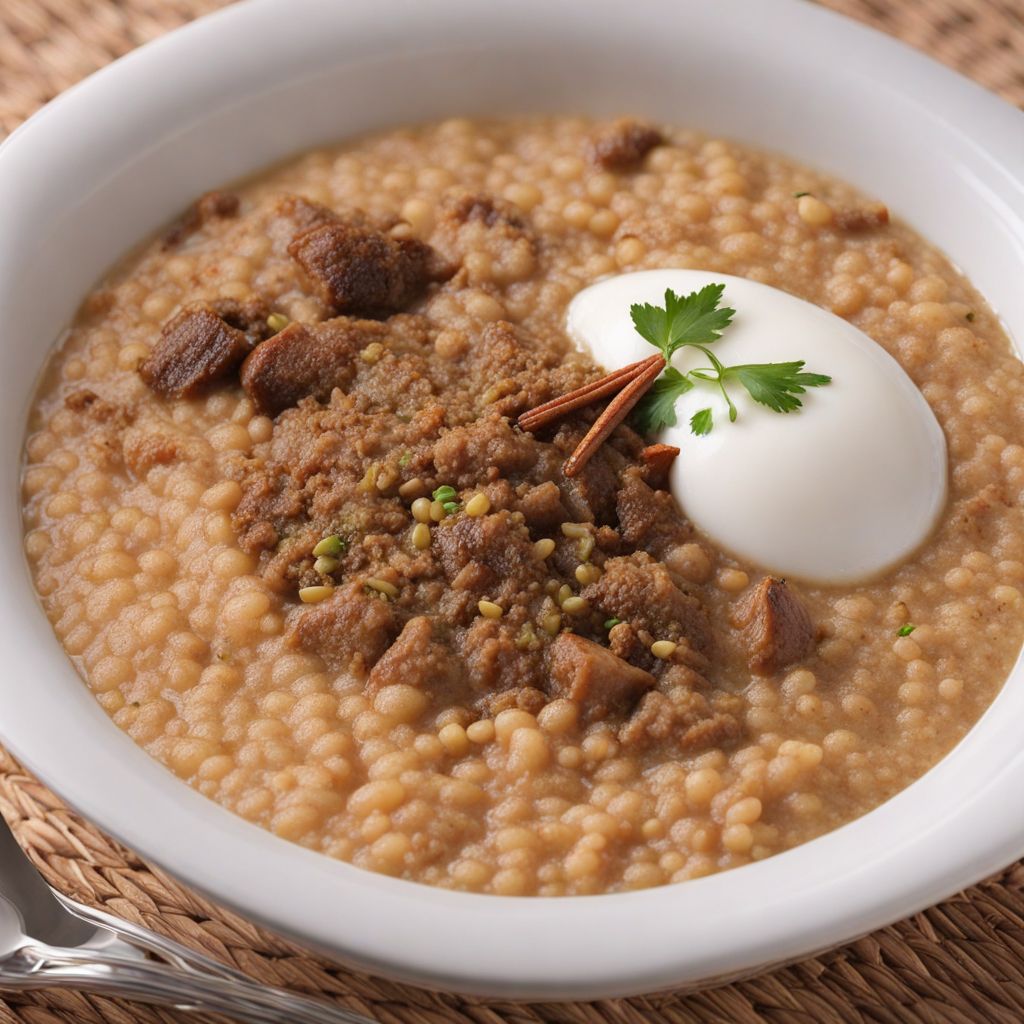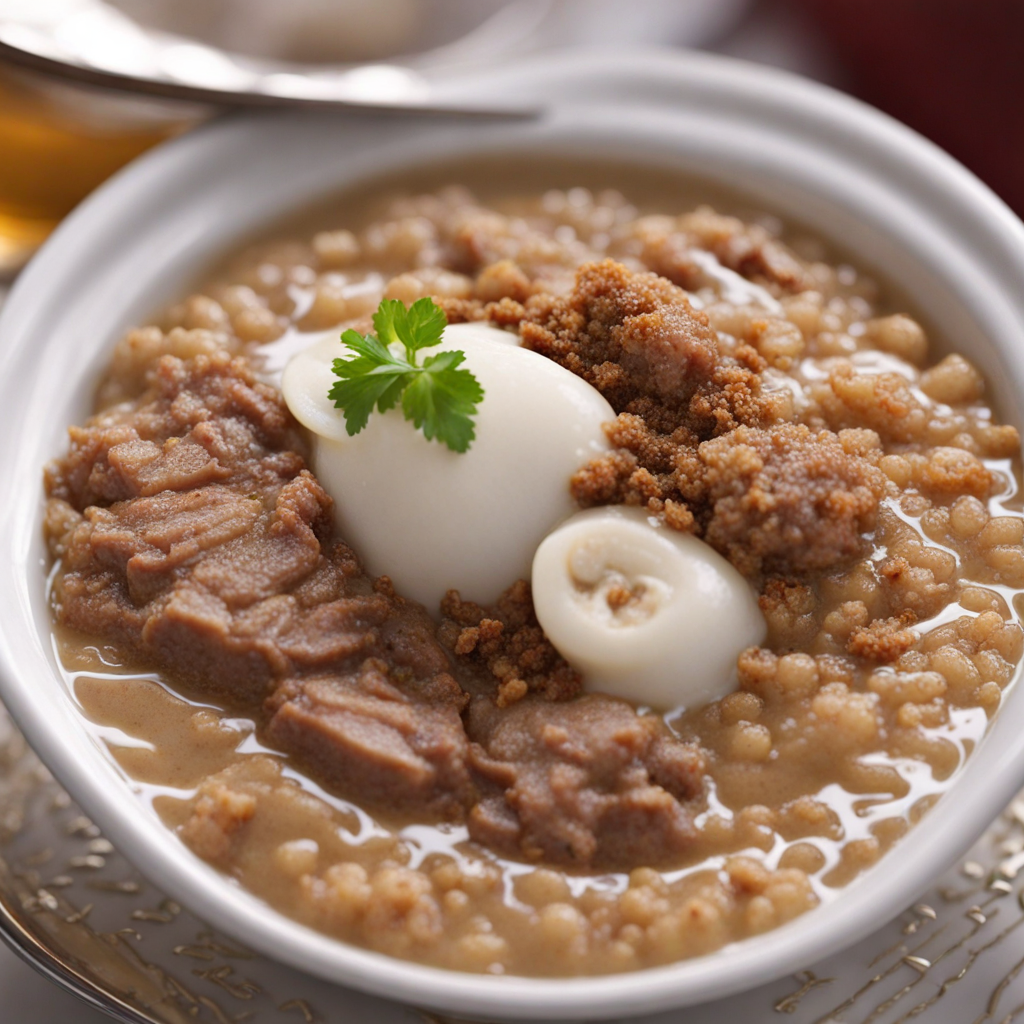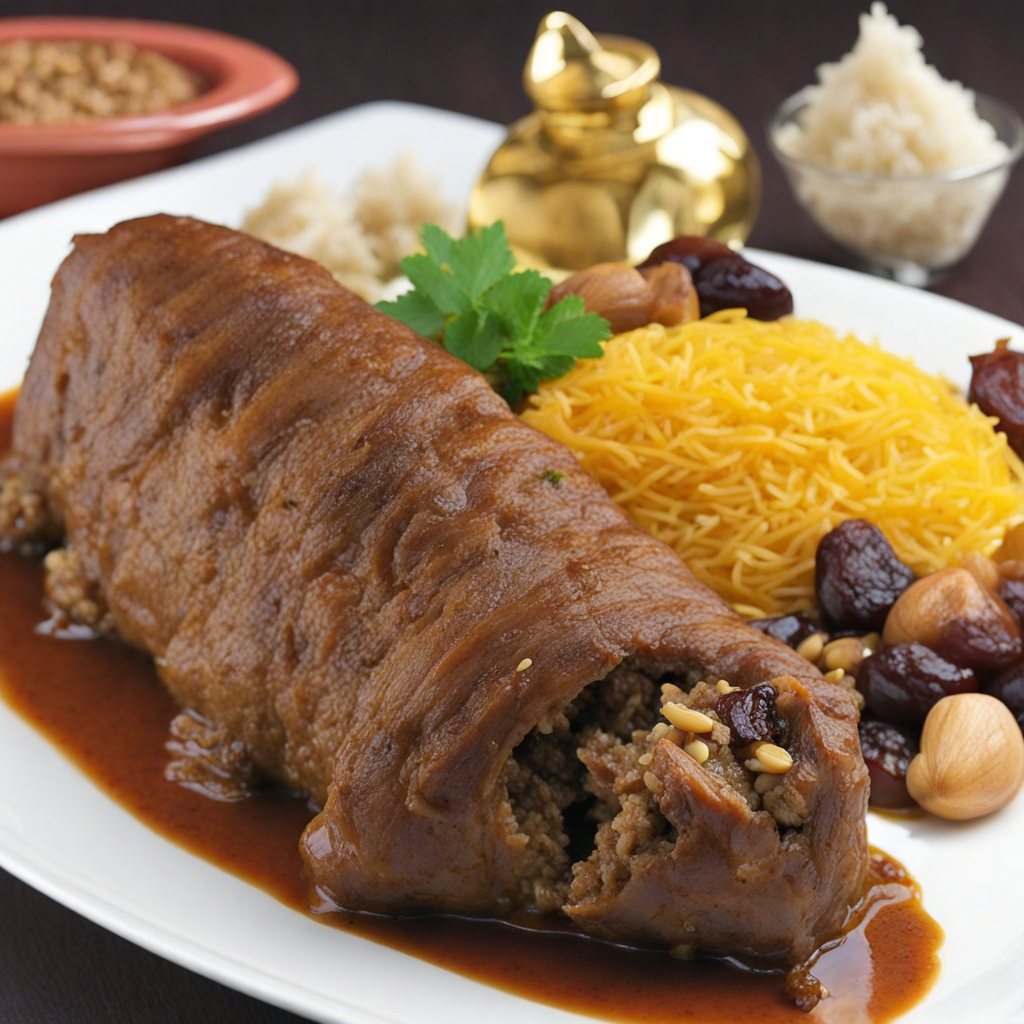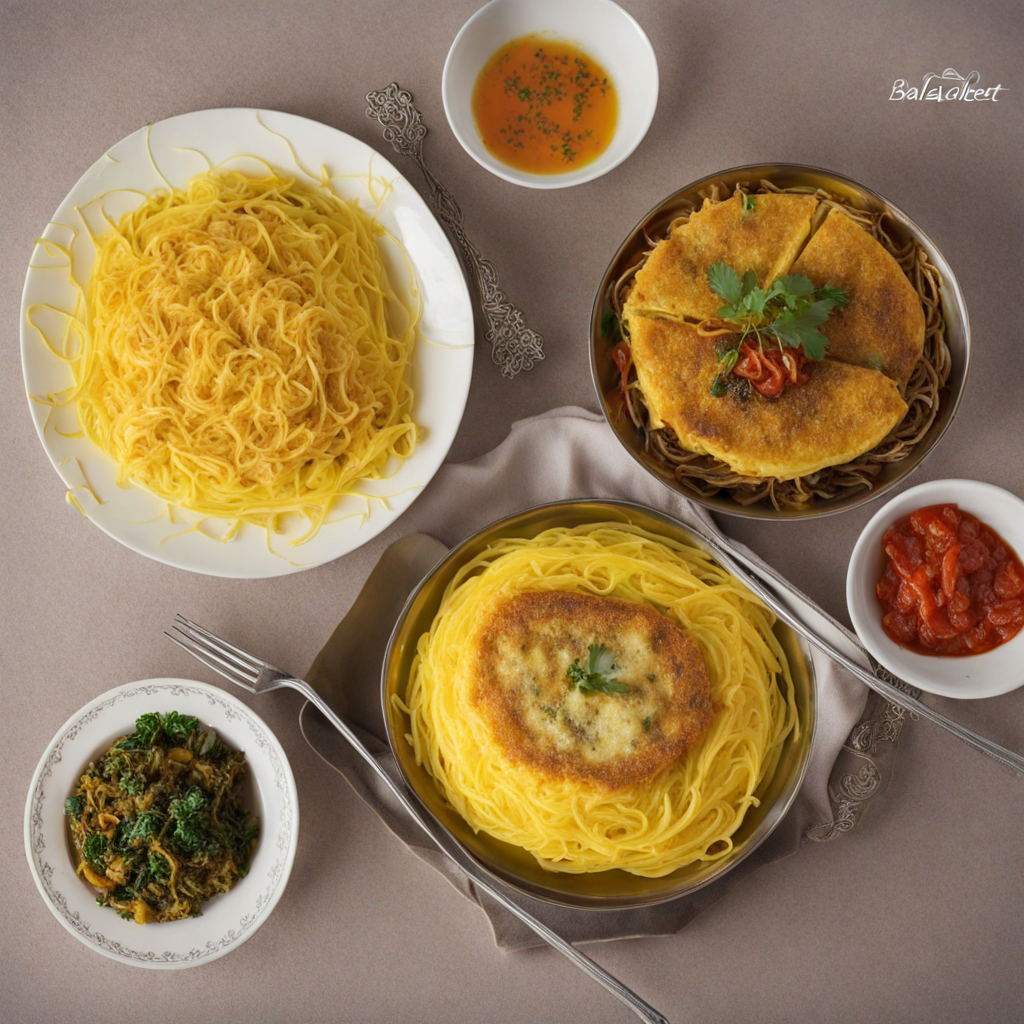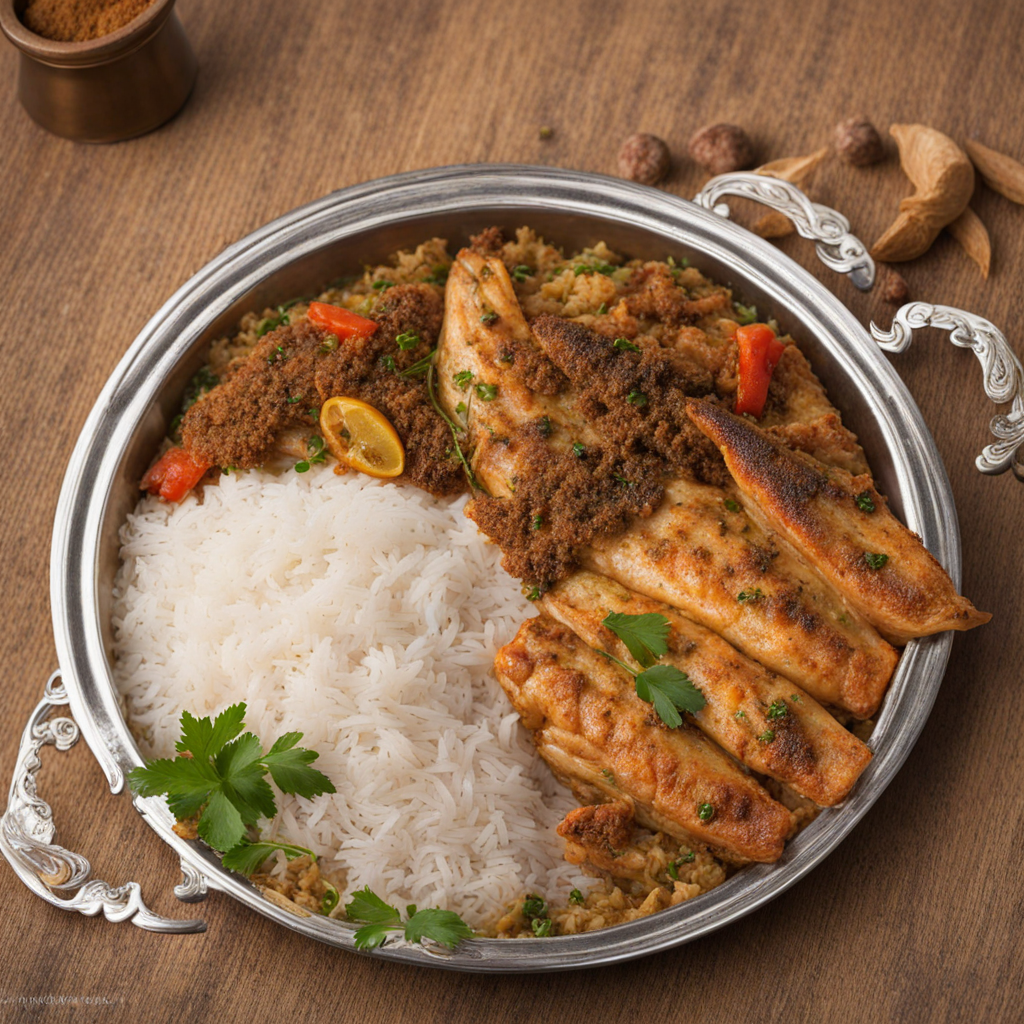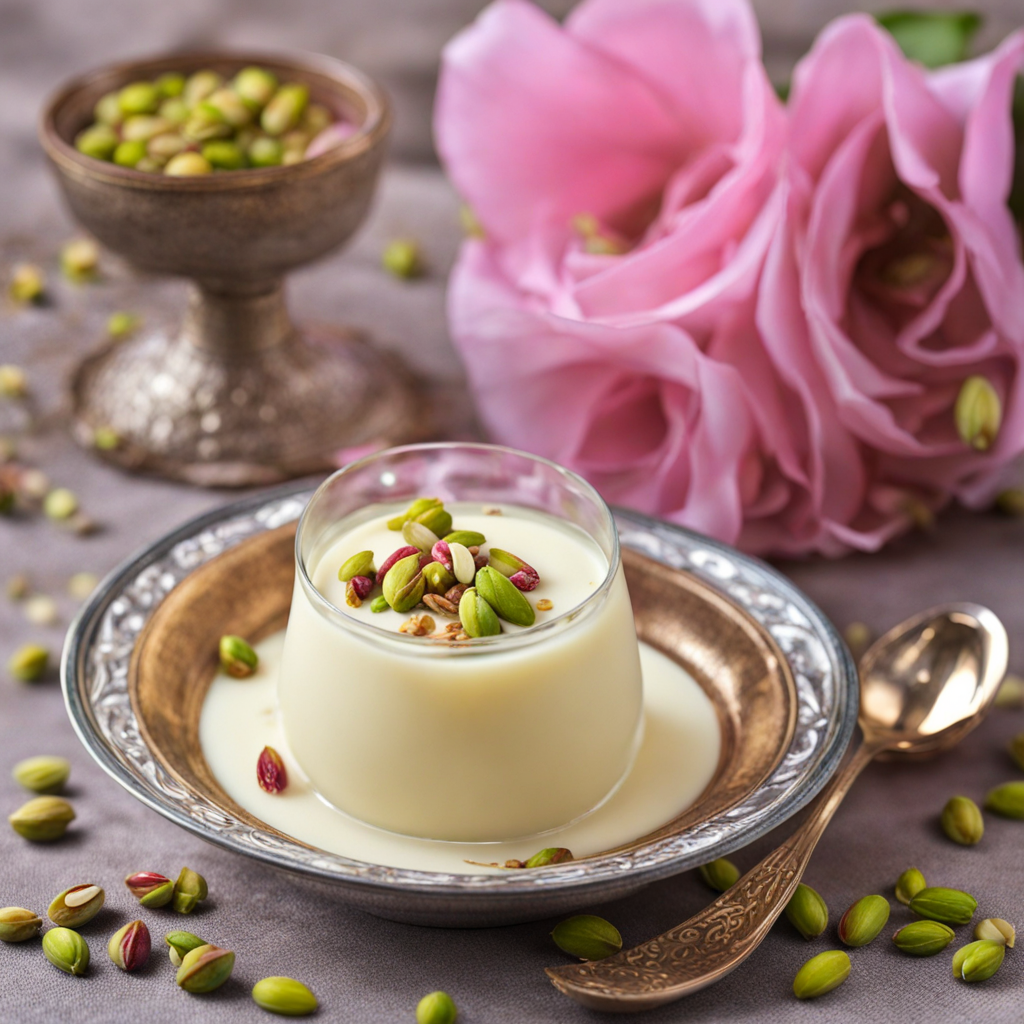Jireesh
Jireesh is a traditional Kuwaiti dish that beautifully embodies the rich culinary heritage of the region. This beloved dish features crushed or ground wheat, which is cooked to create a creamy, porridge-like consistency. Often, it is combined with tender pieces of meat, usually chicken or lamb, that have been simmered until they are melt-in-your-mouth tender. The grains absorb the savory flavors from the meat and broth, creating a comforting and hearty meal that is both nutritious and satisfying. Seasoned with a blend of spices such as cumin, black pepper, and cardamom, Jireesh delivers a warm and aromatic experience that tantalizes the taste buds. Some variations also incorporate onions and garlic, which add a depth of flavor and richness to the dish. The combination of the creamy wheat and the succulent meat creates a delightful texture that is both smooth and hearty, making it perfect for family gatherings and special occasions. Jireesh can be served as a main dish or as part of a larger feast, often accompanied by pickles or a side of salad to balance the richness. It is typically enjoyed during the colder months, providing warmth and comfort to those who partake in it. This dish not only reflects the flavors of Kuwait but also represents the traditions and communal spirit of its people, making it a must-try for anyone looking to explore the diverse and delicious world of Kuwaiti cuisine.
How It Became This Dish
Origin of جريش جريش, pronounced as "jareesh," is a traditional dish that holds a special place in the culinary heritage of Kuwait and the broader Gulf region. The origins of jareesh can be traced back to ancient Bedouin tribes, where it was created as a practical and nutritious meal that could sustain individuals during long journeys across the desert. At its core, jareesh is made from crushed wheat, which is boiled and often combined with meat, typically chicken or lamb. The simplicity of its ingredients reflects the nomadic lifestyle of the Bedouins, who relied on readily available resources. The fundamental components of jareesh have remained consistent throughout history. The wheat used in the dish is typically soaked and then ground into a coarse consistency, which contributes to its unique texture. This method of preparing wheat is not only practical but also highlights the resourcefulness of the people who developed the dish in harsh environments. As trade routes expanded and cultural exchanges occurred, jareesh began to incorporate various spices and flavors, further enriching its profile. \n\n Cultural Significance Jareesh is more than just a dish; it embodies the essence of Kuwaiti hospitality and community. Traditionally, it is served during significant celebrations, including weddings, Eid, and other festive gatherings. Its preparation often involves the participation of family members, reinforcing bonds and promoting togetherness. The act of cooking jareesh is a communal experience, with multiple hands contributing to the process, creating a sense of unity and shared heritage. In Kuwaiti culture, jareesh symbolizes resilience and nourishment—qualities that resonate deeply with the region's history. The dish has been a staple during times of hardship, serving as a source of sustenance for generations. Historical accounts indicate that jareesh was often consumed during conflicts or periods of scarcity, showcasing how it has withstood the test of time and adapted to the needs of its people. \n\n Development Over Time Over the centuries, jareesh has evolved and adapted to the changing tastes and culinary practices of the region. While the basic recipe remains largely unchanged, modern variations have begun to surface, incorporating different meats, spices, and cooking techniques. In contemporary Kuwaiti cuisine, jareesh is often enhanced with a variety of aromatic spices such as cumin, coriander, and cardamom, which add depth and complexity to the dish. Additionally, the rise of international food influences has led to creative interpretations of jareesh. Some chefs experiment with gourmet presentations, transforming the traditional dish into a more refined culinary experience. This evolution reflects the broader trend in global cuisine, where traditional foods are reimagined to suit modern palates while still honoring their roots. \n\n Regional Variations While jareesh is particularly beloved in Kuwait, it is also enjoyed in various forms across the Arabian Peninsula and beyond. In Saudi Arabia, for instance, a similar dish known as "jareesh" is prepared with slight regional modifications, often featuring different meats and cooking techniques. Each country has infused its cultural identity into the dish, showcasing the versatility and adaptability of jareesh. In the UAE, jareesh is often made with a richer broth and is commonly served during festive occasions. Meanwhile, in Bahrain, the dish may include additional garnishes such as fried onions or nuts, further enhancing its flavor and texture. These regional adaptations highlight the shared culinary heritage of the Gulf states while also celebrating individual traditions. \n\n Modern Culinary Scene In recent years, there has been a resurgence of interest in traditional foods like jareesh, spurred by a growing appreciation for heritage and authenticity in cooking. Many Kuwaiti chefs are now focusing on reviving traditional dishes, ensuring that younger generations understand their culinary history and cultural significance. As part of this movement, jareesh has found its way into modern restaurants, often featured as a specialty or a signature dish. Social media platforms have also played a pivotal role in the resurgence of jareesh, as food enthusiasts share their recipes and experiences online. This digital age has allowed for greater visibility of traditional dishes, connecting people across borders and fostering a sense of community among those who cherish their culinary heritage. The storytelling aspect of jareesh, from its origins to its contemporary adaptations, resonates with many, making it a popular topic of discussion among food lovers. \n\n Conclusion: A Dish of Heritage In conclusion, جريش is a dish steeped in history, culture, and tradition. From its humble beginnings in the desert to its place on modern dining tables, jareesh serves as a testament to the resilience and creativity of the Kuwaiti people. Its preparation and enjoyment foster community, making it an integral part of social gatherings and celebrations. As jareesh continues to evolve, it remains a delicious link to the past and a symbol of the rich culinary heritage of Kuwait and the Arabian Peninsula.
You may like
Discover local flavors from Kuwait


